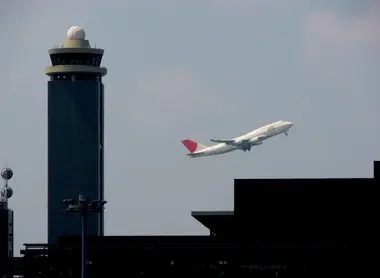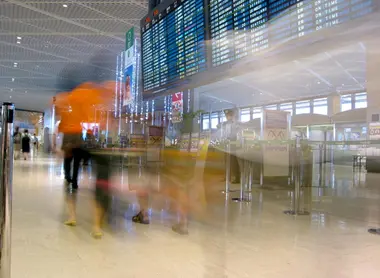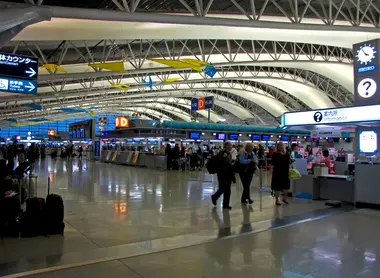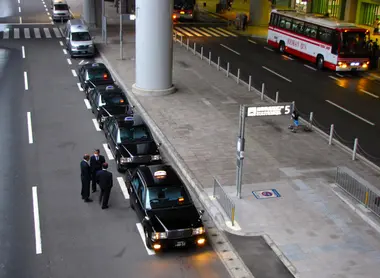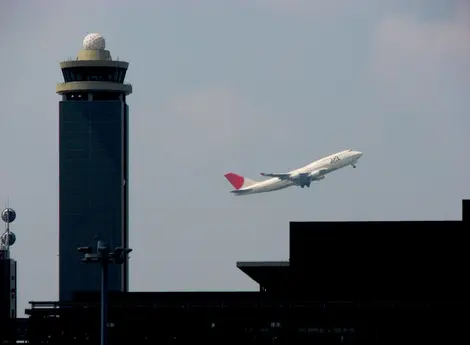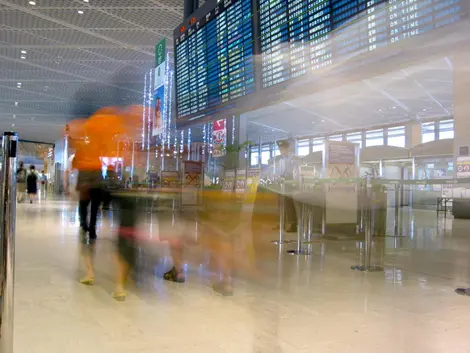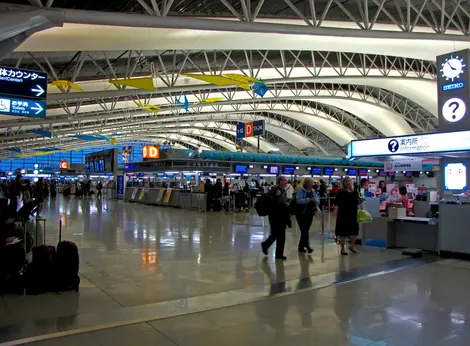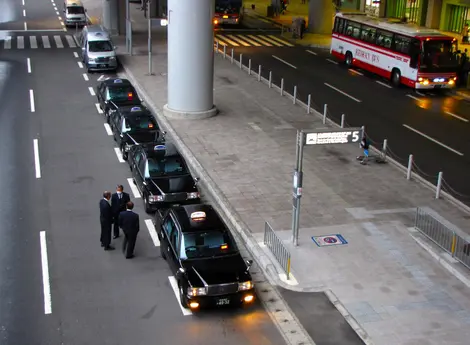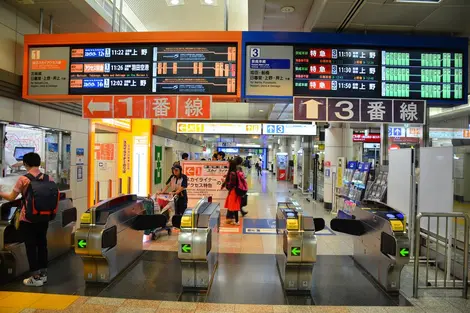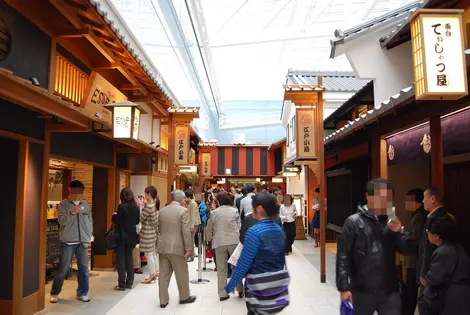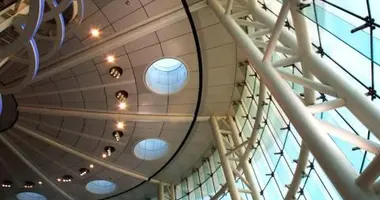Which airport should I land at in Japan?
- Published on : 14/12/2017
- by : J.L.
- Youtube
Fly away!
When traveling to Japan, the choice of arrival airport is an important decision that can influence your experience right from the start. Japan has several international airports, mainly Tokyo Haneda, Tokyo Narita and Kansai (Osaka), each with its advantages and disadvantages. The choice will depend on your itinerary, budget, available airlines and ease of access to your final destination. Let's take a look at the different options available to help you decide which airport is best suited to your needs, so you can make the most of your stay in the Japanese archipelago.
Japan's main international airports
Japan is home to several major international airports, with direct flights from France and other European countries. These infrastructures serve as gateways to different regions of the archipelago.
The three main airports handling international flights from Europe are :
- Tokyo Haneda (HND): located just 14 km south of central Tokyo
- Tokyo Narita (NRT): located around 60-75 km east of Tokyo, in Chiba prefecture
- Kansai International (KIX): built on a man-made island in Osaka Bay, serving Osaka, Kyoto and Kobe
Other less-frequented international airports for direct flights from Europe include :
- Chubu International Airport (NGO): near Nagoya, accessible with connecting flights
- Fukuoka Airport (FUK): gateway to Kyushu Island
- Shin-Chitose airport: access to Sapporo and the island of Hokkaido
According to 2022 statistics, Tokyo-Haneda was Japan's busiest airport, with over 80 million annual passengers, followed by Tokyo-Narita with around 35 million and Kansai Airport with over 23 million.
Tokyo Haneda vs. Tokyo Narita: what's the difference?
For travellers to Tokyo, the choice between Haneda and Narita is crucial. These two airports have very distinct characteristics that will influence your experience from the moment you arrive.
Haneda airport has several significant advantages:
- Its proximity to central Tokyo (14 km) provides rapid access to the city
- Journey time to the city center is just 30 minutes
- Varied and economical transport options (Keikyu train, Tokyo Monorail)
- The airport became an international hub in 2010, and increasingly welcomes long-haul flights
- It's the main hub for domestic flights, ideal if you're planning to travel to other parts of Japan
To reach central Tokyo from Haneda, you have several options:
- Keikyu rail line: direct to Shinagawa, where you can connect with JR lines
- Tokyo Monorail: takes you as far as Hamamatsuchō, with connections to the JR Yamanote and Keihin-Tōhoku lines
- Limousine Bus: comfortable service to major stations in 45 minutes (approx. 930 yen)
Narita airport, on the other hand, presents a different profile:
- It's 75 kilometers from Tokyo, in Chiba prefecture
- Travel time to the city center is around 1h to 1h30, depending on the means of transport
- Inaugurated in 1978, it is historically Tokyo's main international airport
- It often offers more competitive fares on international flights
- The airport offers a greater variety of international flights to different destinations
To reach Tokyo from Narita, you can take :
- The Narita Express (N'EX): JR's comfortable train serving Tokyo, Shinjuku and Ikebukuro directly
- Keisei's Narita Sky Access: takes you to Nippori in 36 minutes
- Limousine Bus: service to major stations in around 70 minutes (1,000 yen)
If you're looking for convenience and want to minimize your travel time, Haneda is generally the best choice. If you're looking for cheaper flights or a wider choice of airlines, Narita might be more appropriate.
Kansai airport (Osaka) and regional alternatives
If your itinerary focuses on western Japan, Kansai International Airport (KIX) is an excellent arrival option. Built on a man-made island in Osaka Bay in 1994, this airport efficiently serves the Kansai region.
The main advantages of Kansai airport include :
- Strategic location for visiting Kyoto, Osaka and Kobe
- Fast access to major cultural sites in western Japan
- Direct connection to Hiroshima and the island of Kyushu via the Shinkansen train
- Modern, efficient airport services
To reach major cities from Kansai airport, there are several options:
- JR's Haruka express train: connects Shin-Osaka in 50 minutes and Kyoto in 75 minutes
- JR express trains: take you to Kobe in 105 minutes
- Nankai's Rapi:t train: reaches the heart of Osaka (Namba) in just 35 minutes
If you're mainly planning to visit the Kansai region, the Kansai Pass could be an economical option for your travels.
In addition to the three main international airports, Japan offers other regional alternatives:
- Chubu International Airport near Nagoya: ideal for exploring the Chubu region and the Japanese Alps
- Fukuoka airport: main gateway to the island of Kyushu
- Shin-Chitose airport: serves Sapporo and the northern island of Hokkaido
Chubu International Airport, although less served by direct flights from France, can be an interesting option via a connection in Helsinki or Frankfurt. Meitetsu trains provide easy access to downtown Nagoya from this airport.
How do I get to the city center from each airport?
Ease of access to the city center is a decisive factor in choosing your arrival airport. Here's a detailed comparison of transport options from Japan's main airports.
From Haneda airport, options for getting to Tokyo include:
- Tokyo Monorail: connects the airport to Hamamatsuchō station in 13 minutes for 500 yen (approx. €3.09)
- Keikyu line: reaches Shinagawa in around 20 minutes, where you can connect with the JR Yamanote line
- Limousine Bus: serves Tokyo's main stations and hotels in 45 minutes (930 yen/7€)
- Cabs: practical but expensive, between 7,000 and 11,000 yen (between €43 and €68)
From Narita airport, the options are :
- Narita Express (N'EX): fast, comfortable train from Narita to Tokyo station in 55 minutes (approx. 3,070 yen/20.35€)
- Keisei Skyliner: reaches Nippori station in less than 40 minutes (2,570 yen/17€)
- Keisei Limited Express: cheaper option (1,000 yen/7€) but slower (1h20)
- Limousine Bus: service to main stations in 70-90 minutes (1,000-2,800 yen)
- Cabs: very expensive option, between 20,000 and 30,000 yen (132-200€)
From Kansai airport, you can reach :
- Osaka: via JR Kansai Airport Rapid Service (70 minutes, 1,210 yen) or Nankai Limited Express Rapi:t (35 minutes, 1,450 yen)
- Kyoto: via Haruka Limited Express (75 minutes, 3,230 yen with reserved seat)
- Kobe: via classic express train (105 minutes) or limousine bus (65 minutes, 2,000 yen)
FromChubu International Airport, Meitetsu trains provide easy access to the center of Nagoya.
If you're traveling with a lot of luggage, don't forget the Ta-Q-Bin luggage delivery service available at all these airports, allowing you to have your luggage shipped directly to your hotel (1,500 to 3,000 yen per item).
Selection criteria: budget, itinerary and airlines
To determine the arrival airport best suited to your needs, several criteria come into play. Let's analyze them to help you make the best choice.
1. Your travel itinerary
The most decisive factor is undoubtedly your planned itinerary:
- If you plan to explore mainly Tokyo and its surroundings (Yokohama, Hakone, Nikkô), Haneda is the ideal option, followed by Narita.
- For a tour of western Japan (Osaka, Kyoto, Kobe, Hiroshima), Kansai airport is the most appropriate.
- If you're planning a circular itinerary (arriving in Tokyo and departing from Osaka or vice versa), consider arriving and departing from different airports.
2. Budget and flight prices
Fares can vary considerably between airports:
- Flights to Narita are often cheaper than those to Haneda, but you need to consider the extra cost and time involved in getting to Tokyo.
- Flights toHaneda are sometimes more expensive, but save on transfers and travel time.
- Flights to Kansai can be comparable to those to Tokyo, but are sometimes less frequent.
It's advisable to calculate the total cost, including flight and transfer to your accommodation, to make a meaningful comparison.
3. Available airlines
The choice of airport can be influenced by the airlines serving each destination:
- Air France now offers all its direct flights to Tokyo to Haneda only (since late 2023).
- All Nippon Airways (ANA ) and Japan Airlines (JAL) serve both Tokyo airports as well as Kansai.
- Several Asian and European airlines offer flights with stopovers to these airports, often at more competitive fares.
4. Arrival and departure times
Timetables can also influence your choice:
- If you're arriving late at night, Haneda may be preferable, as it's closer to the city center.
- Check the times of the last trains from the airports to avoid having to take an expensive cab.
- Limousine buses can be an option for late arrivals from any airport.
5. Traveler profile
Your profile also influences your choice:
- Business travelers generally prefer Haneda for its proximity to Tokyo.
- Backpackers or budget travelers may prefer Narita for its lower flight fares.
- Families with children will appreciate the quick access from Haneda, avoiding long transfers after an already tiring flight.
Practical tips for arrival and departure
To optimize your Japanese airport experience, here are a few practical tips to make your arrival and departure easier.
Pre-arrival preparations
- Fill in the Visit Japan Web form: this online system facilitates immigration, customs and health procedures. It generates a QR code, which you can present on arrival.
- Note the address of your first accommodation: you'll be asked for it on immigration forms.
- Bring cash in yen: although exchange offices are available at all airports, it's best to have some local currency on hand.
- Download useful applications such as Japan Transit Planner or Google Maps to help you plan your journeys.
On arrival at the airport
- Go through immigration: present your passport and the Visit Japan Web QR code. Your fingerprints and a photo of your face will be taken.
- Collect your luggage: during this time, you can use the toilets to optimize your time.
- Go through customs: scan your QR code and passport at the automated terminals.
- Buy an IC card (Suica or Pasmo): these prepaid cards make it easy to use public transport throughout Japan.
- Activate your Japan Rail Pass if you have one: dedicated ticket offices are available at every airport (JR Midori-no-madoguchi ticket office).
- Use the Ta-Q-Binluggage delivery service if necessary: your luggage will be delivered directly to your hotel, so you can travel lighter.
For your departure
- Arrive well in advance: 2-3 hours before your international flight is recommended.
- Check your departure terminal: at Haneda, international flights depart from terminals 2 and 3; at Narita, from terminals 1 and 2.
- Allow time for shopping: Japanese airports offer an excellent selection of souvenirs and tax-free goods.
- Use tax refund services: if you've made eligible purchases in Japan, you can apply for a VAT refund.
- Enjoy the facilities: showers, lounges, restaurants and rest areas are available at all airports.
In the event of a terminal or airport error
- Free shuttle buses run between terminals within the same airport.
- If you arrive at the wrong airport and have 2-3 hours to spare, cabs are often the only viable (albeit expensive) option.
- With more time on your hands, express trains or limousine buses can get you to the right airport.
Services available at Japanese airports
Japanese airports are renowned for the quality and diversity of their services. Here's an overview of what you can find at the country's main international airports.
Information and assistance services
- Tourist information desks: available in all terminals with English-speaking staff
- Currency exchange services: numerous exchange offices and ATMs accepting international cards
- Free WiFi points: wireless connection available in all airports
- Wheelchair and stroller loans: available from information desks
- Multilingual assistance: particularly in English, Chinese and Korean
Practical services
- Luggage lockers: manual or automatic, available at various rates (400-800 yen per day depending on size)
- Ta-Q-Binluggage shipping service: sends your luggage directly to your hotel (1,500-3,000 yen per item)
- Shower rooms: ideal for freshening up after a long flight (500-1,000 yen)
- Rest areas and capsule hotels: at Haneda and Narita for transits or late arrivals
- Ticket booths for Japan Rail Pass and other regional passes
Shopping and dining
The three main international airports offer a remarkable shopping experience:
- Duty-free stores: offering cosmetics, alcohol, tobacco, electronics and luxury goods
- Souvenir stores: traditional handicrafts, confectionery and typical Japanese products
- Specialty stores: like the Pokémon stores in Haneda and Kansai
- Restaurants and cafés: from traditional Japanese cuisine to international fast food (60+ options in Kansai)
- Cultural exhibition spaces: like the Edo Market Place in Haneda, recreating the atmosphere of traditional Japan
Airport-specific features
Each airport has its own special facilities:
- Haneda: 24-hour shopping, Tokyo Pop Town (entertainment zone), panoramic observatories
- Narita: NAA Art Gallery, Japanese gardens, gachapon areas (toy vending machines)
- Kansai: Sky View Observation Hall offering panoramic views of the slopes, stores representing Kansai culture
- Chubu: outdoor Sky Deck, public baths overlooking the runways
The quality of service at Japanese airports contributes significantly to the overall travel experience. Make sure you leave enough time to enjoy these facilities, especially on your departure, as they are an integral part of the Japanese experience and will help you spend a pleasant last few hours in the archipelago.
By using Japan's private train lines from these airports, you can easily reach your final destinations and start your Japanese adventure in the best possible conditions.
